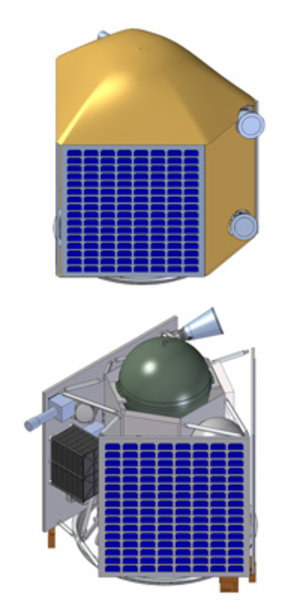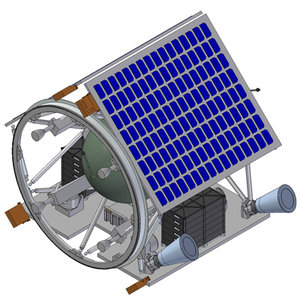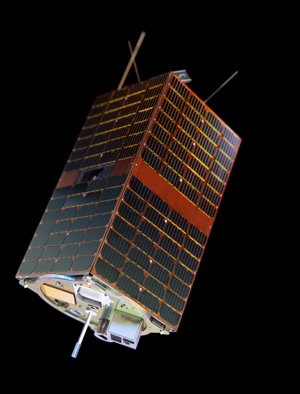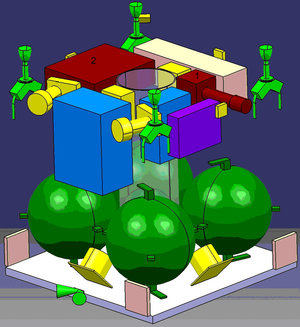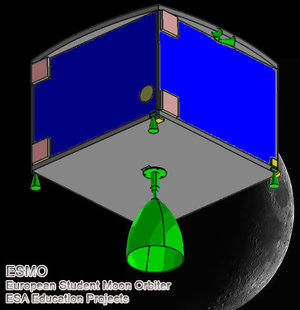Technical facts
The table below provides an overview of the spacecraft platform and the ground segment.
|
Lunar transfer
The spacecraft of approximately 265 kg mass (incl. 93 kg propellant) and a size of 120 x 110 x 100 cm was designed to be launched as a secondary or auxiliary payload into geostationary transfer orbit.
From there, the spacecraft would use its on-board propulsion to travel to lunar orbit via a weak stability boundary transfer. This travel via the Sun-Earth L1 Lagrange point takes three months, but it requires much less propellant than a direct transfer.
Lunar orbit
The present mission design inserts the spacecraft into an initial lunar operational orbit of:
- periapsis altitude: 280 km
- apoapsis altitude: 16400 km
- inclination: 56°
Payloads
Payloads being studied are:
Narrow Angle Camera (outreach payload): to take images of the lunar surface. High school students will be able to propose a lunar site to be imaged.
LunaNet (technology demonstration payload): internet-like network at the Moon for communication between future spacecraft in lunar orbit, landers, rovers and ground stations on the Earth. The LunaNet experiment will test the associated communication protocols for the Lunar Internet.
Radiation Monitor (scientific payload): a compact and low power radiation monitor which can provide inputs for Space environment models.
Radar (scientific payload): to provide radar observations of the Moon. (radar observations from Earth are limited to the Earth-facing side of the Moon).
- Microwave Radiometric Sounder (scientific payload): a passive microwave radiometer to measure thermal and dielectric properties of the lunar regolith.


